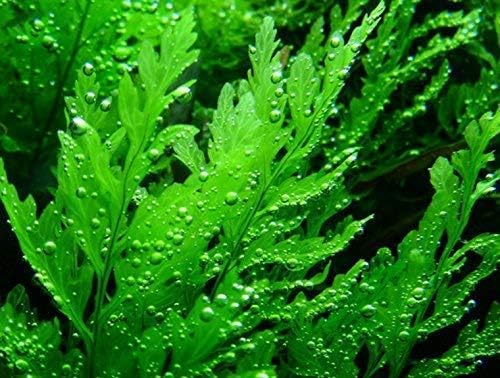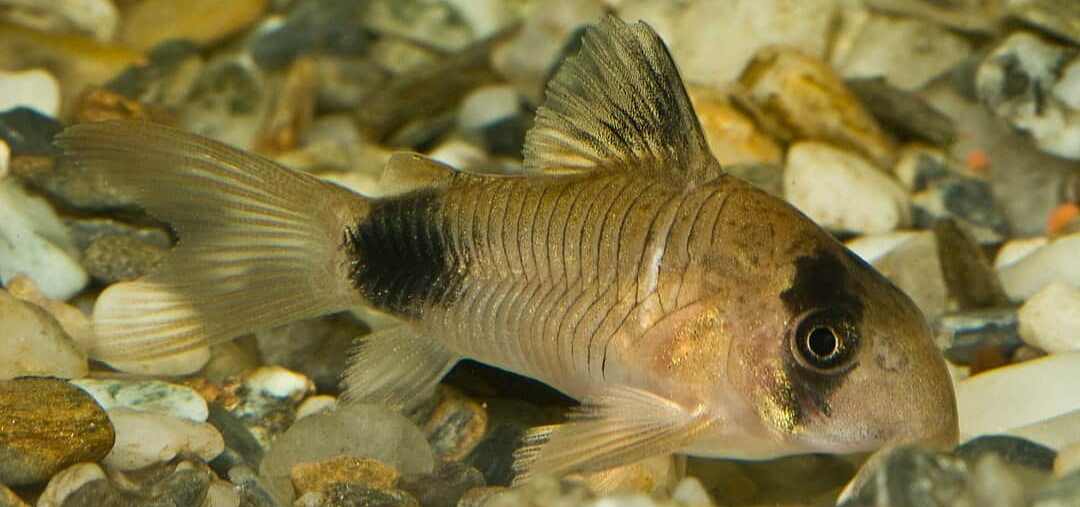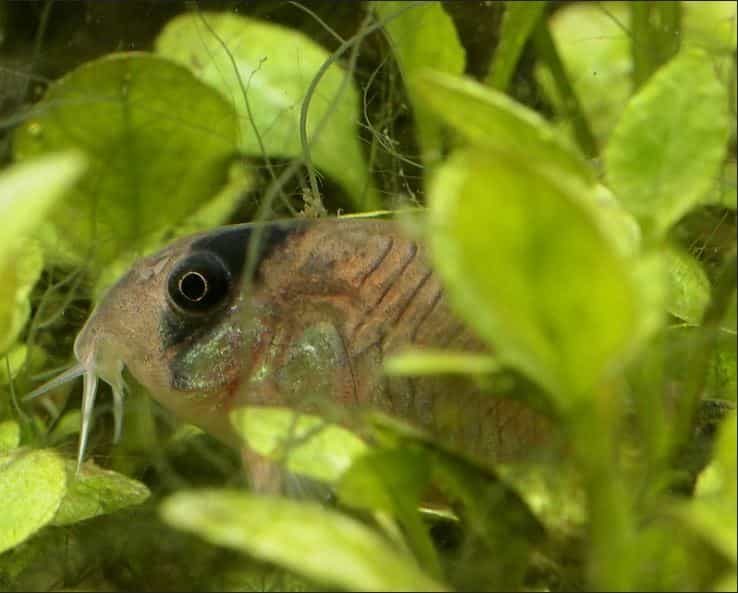Panda Corydora Catfish – How To Care For and Breed This Super Cute Fish – In 9 Sections
Image provided by Wikipedia – By Chronotopian – Own work, CC BY-SA 3.0, https://commons.wikimedia.org/w/index.php?curid=21281171
I would love to put here how vicious and mean Panda Cory’s are. But that is not even close to the case.
Actually, gentle and cute are the two words used to describe this fish.
Corydoras, including the Panda Corydoras, are “optional” air breathers and have a modified intestine that has developed to enable the absorption of surface air. This allows them to survive in waters with low oxygen levels. Because of this, you will occasionally see them come up to the surface to take gulps of air in the aquarium.
Corydoras means: Cory = helmet; doras = leathery skin, breastplate. panda alluding to the Chinese mammal.
Panda Corys have two spines at the end of their pectoral fins. This mechanism serves as a defense against predators. When molested, the spines are projected, injuring the predator.
There are reports that this species has venom glands in its fins. The rigid spines of the pectoral fin can puncture human skin, and a ‘sting’ can be excruciating, so take care when handling.
Known for eye “blinking” behavior, the cory’s eyes rotate in their sockets, causing the impression of blinking. This species has a highly developed sense of smell, and its barbels allow it to find food buried in the substrate. Like most catfish, it is an armored species lacking scales, with two rows of bony plates on each side of its body covering the head region.
Panda Cory Tank Requirements
The short version:
The minimum tank size for the Panda Corydora fish is around 20 gallons. Panda Cory’s are social fish and feel safer if other corys are around so buy a minimum of 6 individuals.
Preferably use a fine substrate of sand or rounded gravel, avoiding the use of sharp gravels that could damage their barbels and mouth. Species appreciate an aquarium with plenty of plants and shelters to hide in.
The long version:
Panda Corydoras thrive in a clean, well-maintained environment. They require a tank of at least 20 gallons, although larger is always better, especially if you plan to keep a group of them. These fish are social and prefer to live in schools of at least six, so be sure to provide enough space for their comfort.
Water Quality
Water quality is crucial. Panda Corydoras are sensitive to changes in water parameters, so regular monitoring is essential. They prefer water temperatures between 72°F and 78°F (22°C to 26°C), with a pH range of 6.0 to 7.5. Soft to moderately hard water is ideal. A good filtration system is necessary to maintain high water quality, and partial water changes of 20-30% weekly will help keep the environment stable.
Substrate and Decor
Substrate choice is important too. Panda Corydoras have delicate barbels that can be easily damaged by rough or sharp substrates. A soft, sandy substrate is best, allowing them to forage comfortably for food. These bottom-dwellers will appreciate a variety of hiding spots and plants to create a natural and secure environment. Adding driftwood, smooth rocks, and dense planting can provide the shelter they need.
Diet
Diet-wise, Panda Corydoras are omnivorous and benefit from a varied diet. High-quality sinking pellets or wafers should form the base of their diet, supplemented with live or frozen foods such as brine shrimp, and daphnia. Feeding should be done in moderation to avoid overfeeding and subsequent water quality issues.
So what’s the bottom line? Provide a spacious, clean, and well-planted tank with soft substrate and appropriate water conditions.
Experience These Article in Audio Using Your Browser!
If a system or browser is not mentioned here, the I haven't been able to find out how to make the system or browser work to read aloud.
PC's: Using the Edge Browser, left click on the article text and scroll down to "Read Aloud." The article will automatically be read to you.
iPhone using the Edge Browser: Using the Edge brower, tap the icon that looks like a book with a speaker located in the in the address bar. The article will come up now showing 4 icons on top. Tap on the second icon from the right to have the article read to you.
Android phones: Google Assistant is the most convenient way. Say, "Google, read this page."
Behavior & Compatibility
You can keep your Panda Cory fish in a community aquarium if the aquarium has small and equally peaceful fish as tank mates. Here is an article I wrote that might be helpful in chosing tank mates: 20 Best Fish For Beginners
Guppies would also be an excellent choice for Panda Cory company.
This catfish is mostly active at night.
Panda Corys are a friendly and gregarious fish, and will be found in schools ranging from 20 to 100 individuals in its natural environment. Because of this, Corys should be kept in groups of at least six individuals.
Because of its ability to breathe atmospheric air, Corydora fish can commonly be seen swimming quickly to the surface to gulp air and return to the substrate to rest.
Panda corys are known for their peaceful and gentle nature. As you are probably aware, they are usually foraging along the bottom of the tank, sifting through the substrate in search of food. While they are not overly active, they do exhibit bursts of energy, darting around the tank chasing each other.
These fish are highly social and thrive in groups of at least six individuals. When kept in a suitable school, they display a range of behaviors, including schooling, foraging together, and even spawning.
Compatibility with Tank Mates
Panda Corys are generally compatible with a variety of peaceful fish species. It is important to choose aquarium fish that are similarly sized and have a calm temperament. Here are a few ideal tankmates for Panda Corydoras:
Other Corydoras Species: Most Corydoras species are compatible with Panda Corys, as they share similar water parameters and peaceful behavior. Some popular choices include the Peppered Cory, the Bronze Cory, and the Albino Cory.
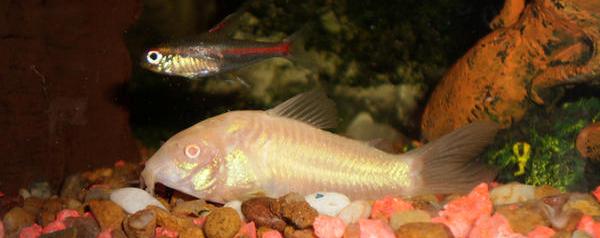
Tetras: Tetras are another excellent choice for tankmates, as they are peaceful and active swimmers. Some suitable species include the neon tetra, cardinal tetras, and the rummynose tetras.
Rasboras: Rasboras are small, peaceful fish that can coexist harmoniously with Panda Corys. Popular options include the harlequin rasbora and the chili rasbora.
Dwarf Cichlids: Certain dwarf cichlid species, such as the ram cichlid and the apistogramma, can be kept with Panda Corys as long as they are not overly aggressive.
Snails: Snails, such as the nerite snail or the mystery snail, can help clean up the aquarium and provide additional interest.
Water Parameters and Tank Setup
Panda Corys thrive in soft, slightly acidic water with a pH between 6.0 and 7.0. The water temperature should be maintained between 72°F and 78°F.
A well-planted aquarium with plenty of hiding places is ideal for Panda Corys. They appreciate a soft substrate, such as fine sand or coated gravel, which is gentle on their sensitive barbels. You could also consider adding driftwood or other decorations that will create a natural-looking aquarium.
Feeding
Panda Corys are omnivorous and will readily accept a variety of foods. A high-quality flake or pellet food can be supplemented with live or frozen foods, such as bloodworms, daphnia, and brine shrimp. To encourage natural foraging behavior, consider sinking tablets or wafers specifically designed for bottom-dwelling fish.
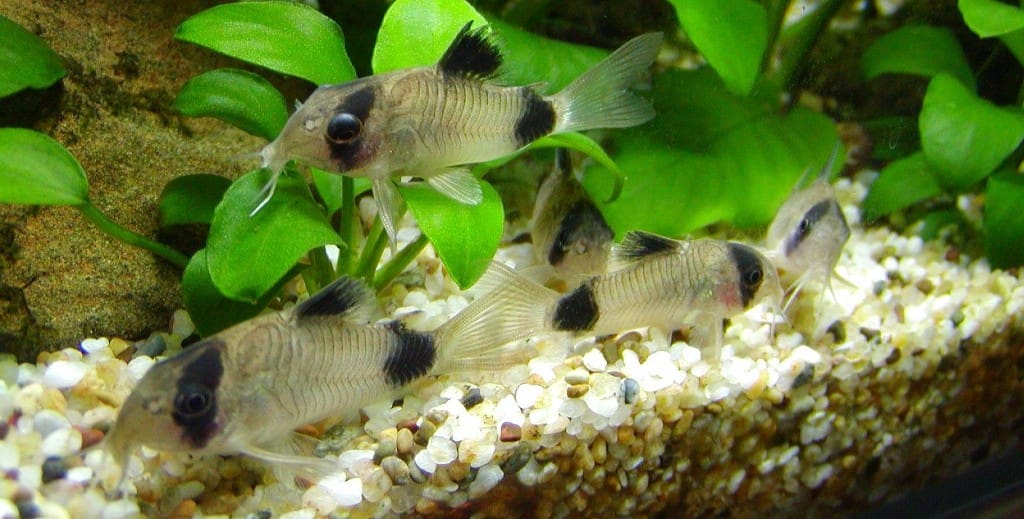
Hey awesome fish keeper! You can use these images. Please link back to my site when you do so. You’re awesome! Or did I say that? Anyway, Thanks!
You can turn your aquarium fish hobby into an income producing side hustle.
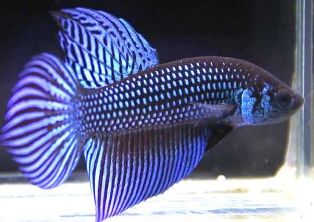
Create a website like mine to earn enough to buy aquariums, or fish, or equipment or if you work hard enough, retire from your 9 to 5.
I used "Divi" website creator to make this website. It costs $89/year (this comes out to about $7/month.)
Tap this ad to find out more.
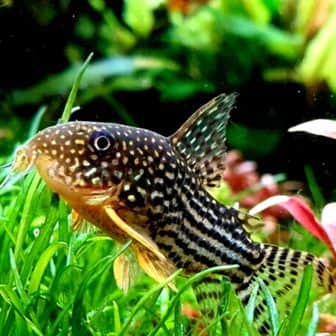
Feeding
Panda Corydoras are an omnivorous species. In their natural environment, they feed on worms, crustaceans, insects, and plant matter. In captivity, Panda Cory cats will readily accept dry and live food. Like most Corydoras, they will eat food that settles to the bottom of the aquarium.
This species is more active at night; you must provide food when you turn off the aquarium lights. Although they will feed during the day, they are slow to eat and may not compete well with other fish for food.
We often think of Corydora catfish as cleaner fish that live off of leftovers and fish waste. Under no circumstances should we should expect them to survive on ‘leftovers’ of food from other aquarium inhabitants, wastes, and residues.
We should feed Panda Corys “bottom feeder” foods and live, fresh food. A frozen “live” blood worm would be 5 star dining to a cory catfish.
Reproduction
Pandas are an oviparous (egg laying) species. During the mating ritual, the couple assumes a position known as the “T,” with the male carrying the upper part of the “T” and the female positioned cross wise to the male. The female will trap two to four eggs between her pelvic fins, where the male will fertilize them for about 30 seconds. The female will only swim near a suitable spot where she will lay the sticky eggs, usually on some flat surface such as aquarium glass, roots, and leaves.
Mating Cory’s will repeat this mating ritual many times, with up to 200 eggs being laid. The incubation period lasts around 4 to 5 days when the eggs hatch. The new born fry will be free swimming three days later. There is no parental care.
The 20 Best Freshwater Aquarium Fish For Beginners (With Pictures)
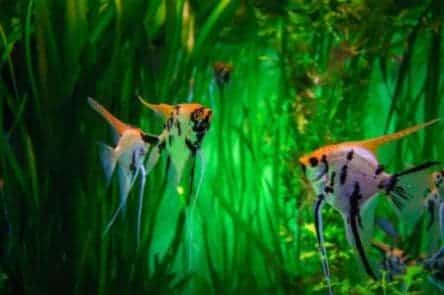
Noticable differences between male and female Panda Corys
The males are slightly smaller than females. The females are more stocky and have a larger and more dilated ventral region.
Biotope (Natural Environment)
Panda Cory’s live in streams of clear, shaded water. These areas will have soft, sandy substrates.
Often these streams are fed with water from the runoff of melted Anddean mountain ice. This cold runoff can occasionally lower the Cory’s water to as low as 66° F.
Panda Corydoras, (Hoplisoma panda) Start Guide For Beginners
While their exact lifespan in captivity hasn’t been systematically studied, they are known to live fairly long lives, with 10 years being the average lifespan. Some have lived up to 15 years in well-maintained aquariums.
To ensure your Panda Corydoras live long, healthy lives, there are several key factors to consider:
Water Quality:
Like all fish, Panda Corydoras thrive in clean, well-oxygenated water. Regular water changes are essential, as is a good filtration system. Aim for at least a 50% water change weekly.
Diet:
A varied diet is crucial for their health. Feed them a combination of high-quality flake food, sinking pellets, and live or frozen foods such as bloodworms, brine shrimp, and daphnia.
Tank Size:
While Panda Corydoras are relatively small, they are social fish and prefer to live in groups. A tank size of at least 20 gallons is recommended for a group of (at least) 6-8 individuals.
Tank Mates:
Choose tank mates carefully, as Panda Corydoras are peaceful fish and can be bullied by more aggressive species.
Temperature:
Maintain a stable water temperature between 72-78°F (22-26°C).
Substrate:
Provide a soft, sandy substrate for them to sift through and search for food.
Decor:
Include hiding places such as caves, rocks, and plants to provide a sense of security and encourage natural behaviors.
By providing these optimal conditions, your Panda Corydoras should live a long life in your aquarium.
Additional:
* Corydoras Catfish: An Aquarist’s Handbook Paperback – January 1, 1996
by Derek Lambourne (Author)
* The Corydoras Catfish Handbook: A Comprehensive Guide for All Enthusiasts Covering Diverse Species of Corydoras Catfish and Detail Explanation On Maintenance, Feeding, Tank Setup, Breeding and Health Paperback – August 9, 2024
by Mark J. Williams (Author)
* Video: Top 10 beginner tips for keeping Corydoras catfish!
Video: Panda Cory Catfish Care: A GREAT Addition to a Community Aquarium!
Farlowella: For When Regular Plecos Just Aren't 'Pleco-y' Enough
(Or maybe: The fish from outer space)
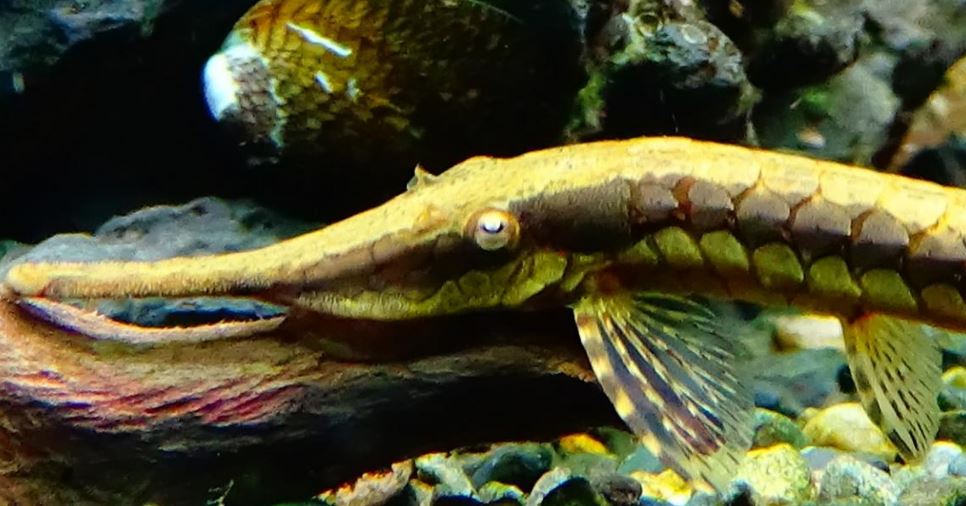

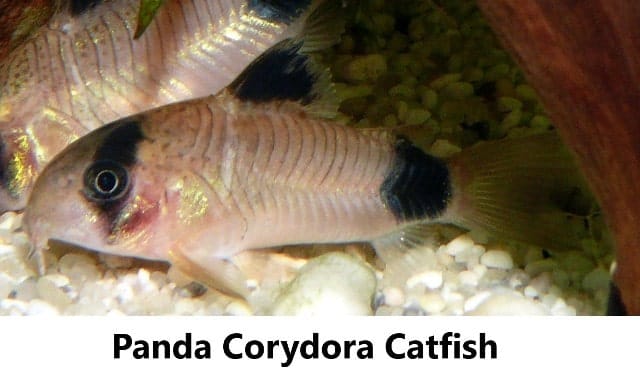
Common Name: Panda Cory, Panda Catfish
Scientific Name: Corydoras panda
Order: Siluriformes — Family: Callichthyidae (Armored catfishes)
Distribution: South America, upper Amazon (Peru)
Adult Size: 1.5 in — Average size in an aquarium: 1 in
Life Expectancy: 10 years
pH: 6.0 to 7.6 — Hardness: 2 – 12
Temperature: 68°F to 82°F
* Panda Corydora picture was provided by https://en.wikipedia.org/wiki/Corydoras_panda
** Picture provided by: Dornenwolf
Corydoras panda , Panda Panzerwels
OLYMPUS DIGITAL CAMERA
References:
Baensch, H.A. and R. Riehl, 1985. Aquarien atlas. Band 2. Mergus, Verlag für Natur-und Heimtierkunde GmbH, Melle, Germany. 1216 p.
Reis, R.E., 2003. Callichthyidae (Armored catfishes). p. 291-309. In R.E. Reis, S.O. Kullander and C.J. Ferraris, Jr. (eds.) Checklist of the Freshwater Fishes of South and Central America. Porto Alegre: EDIPUCRS, Brasil.
Romero, P., 2002. An etymological dictionary of taxonomy. Madrid, unpublished.
Other pages on this site:
* Freshwater Aquarium Plants You Can Grow
* 11 Exquisite, Effortless Aquarium Plants That Totally Won't Outgrow Your Tiny Fish Tank
* Discus Fish: Because Regular Fish Just Aren't Enough of a Challenge
* Planted Nano Aquarium Magic: Tricking Your Plants Into Thinking They're Happy (CO2-Free Method)
* How to Train Your Oscars: Because Fish Totally Respond to Commands Like Dogs
* What size aquarium should you get?
Grow Beautiful Aquarium Plants Without Substrate
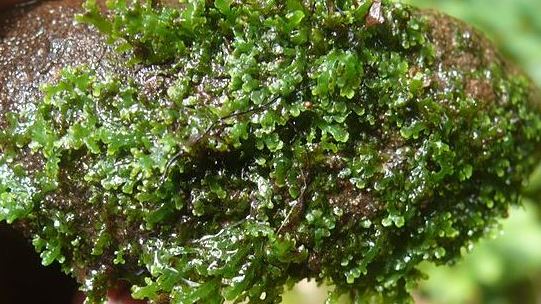
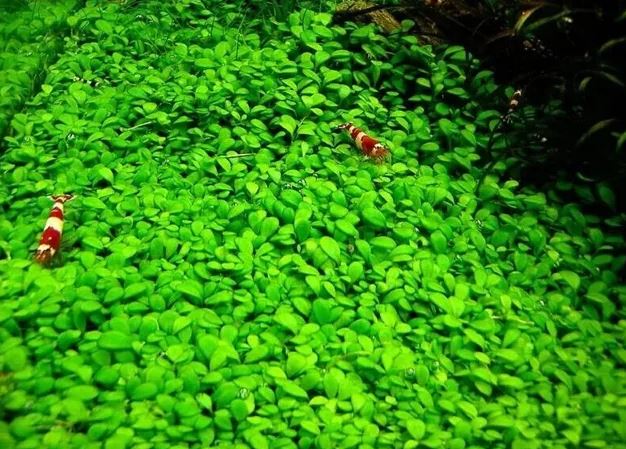
Small Planted Aquariums Without CO2

